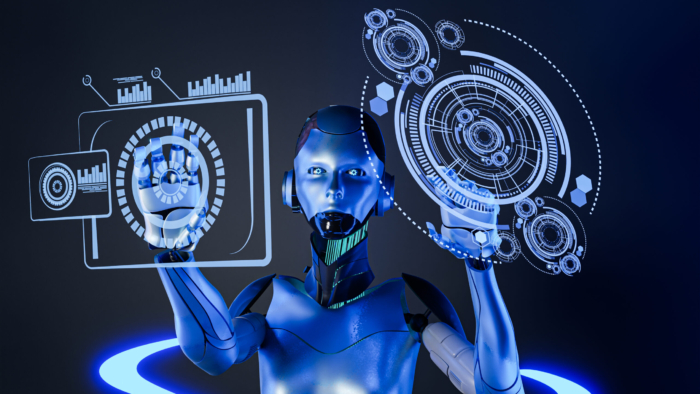With all the buzz around artificial intelligence, you are definitely thinking smart by asking whether AI will replace UX designers. Although the buzz around AI has been growing steadily over the last decade since the launch of OpenAI’s chatbot, ChatGPT, the buzz and speculations around its impact on human jobs have exploded.
If you are reading this, you’ve probably understood that AI is starting to reach every corner of the tech space. And, you are probably wondering whether UX design jobs are under threat.
Truthfully, like most aspects of human life, AI will have an increased relevance in product design in the coming years. AI systems are great at processing vast amounts of data and generating output based on this data. Using generative AI systems (a type of AI that is capable of generating text or other content in response to user prompts) for academic research papers, technical documents, children’s books, and even legal documents has become commonplace. Already, tools like Galileo AI and Uizard are being used to develop impressive UI designs.
However, will artificial intelligence really replace UX designers? Our answer is a hard no. And here’s why:
AI cannot replicate all elements of the UX design experience.
The UX design process essentially consists of 5 steps: user research, analysis, design, user testing and implementation. Although the process typically takes place in this order, it is an iterative process and may often require revisiting a step in the course of product development.
User Research:

The rudimentary value of the UX designer is the ability to realise business outcomes while creating an impact on users. To achieve this, good UX designers engage in deep research to understand the needs of users, their wants, goals, and behaviors. This a complex human function which AI cannot fully replicate.
For starters, AI is limited in its ability to generate innovative research questions or hypotheses in the same way human researchers can. Also, AI still struggles to fully understand the context of user behavior, emotions, or cultural nuances that are typical of user research. There are AI insight generators and collaborators that have been developed to process and derive insights from user research sessions. These are however limited in the kind of information they are able to process. AI systems often misinterpret or fail to capture the subtleties of user interactions, which human researchers can often pick up. This limits AI systems to text-based information, which may be insufficient for effective user research.
Data Analysis:

At this stage, the UX designer processes the information collected and distils it into elements that will be affected in the product design. These include developing user personas, and user stories. Notwithstanding the limitations we’ve taken note of in the data that can be collected during research, AI still suffers some limitations in analysing text-based data. AI may have difficulty analyzing unstructured qualitative data such as open-ended responses, user comments, and even some interview transcripts. Human researchers are better equipped to understand and interpret such information and provide a more nuanced interpretation.
Design:

At the design stage, the UX designer brings the ideas and research insight to life. This involves sketching, wireframing and prototyping. When a functional design is achieved, the UX designer communicates the design specifications and develops a design system. The prospects of an AI disruption in this aspect of UX design are unavoidable as we have already seen with tools such as Galileo AI and Uizard.
With natural language prompts, a designer can develop wireframes and mock-ups that represent his idea. However, the output is only as good as the prompts. This is because AI is limited by the instructions provided. And although they may include more details than are mentioned in the prompts, they are limited in the level of creativity they can bring to the design process. AI are trained and rely on data that can access and they are limited to that data. If a particular product feature is conventionally designed in a certain way, an AI UI design tool will produce output that follows that convention. They simply cannot reach the infinite nature of human creativity.
The Future
With the rate at which AI is developing, some of the issues we identified above may not be as problematic in the years to come. Will AI take over some aspects of UX design? Yes. It’s already doing that and more far-reaching disruptions can be expected. However, will artificial intelligence completely take over the role of UX designers? That is very unlikely.
AI will always be limited by its ability to completely replicate certain higher-level human capabilities such as empathy, creativity and critical thinking. These skills are core to the UX design process. If your value as a product designer is simply creating layouts and designs without providing user-centred solutions that make an impact on users, then your job may be in danger. UX designers have to understand the capabilities and limitations of AI and maximise their human capabilities to ensure their continued relevance.
So, if you are still contemplating starting a career in UI/UX design, go for it. The advancements in UI/UX design are only there to aid you. At MevNet Studios, our stellar UI/UX design course awaits you. Start your journey into the exciting world of UI/UX design today with MevNet Studios.


Add a Comment